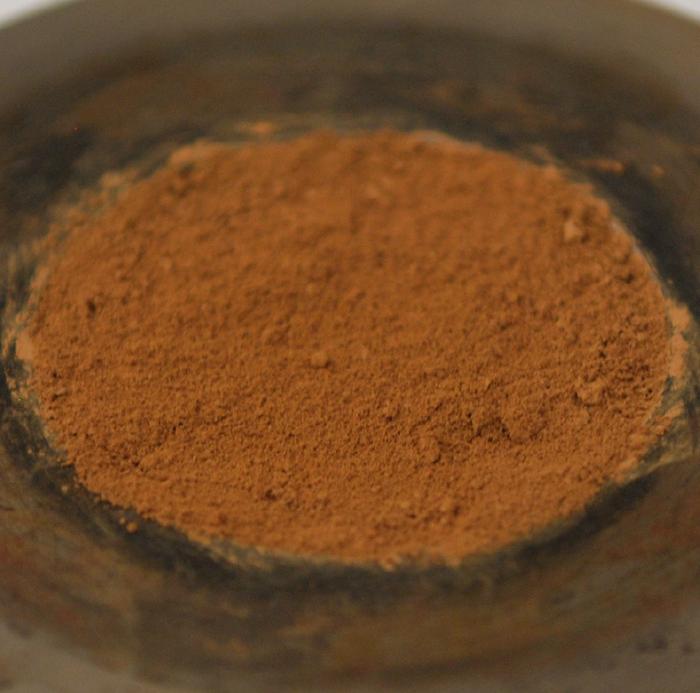A new study has found evidence that Mars’s red color may not be caused by the mechanism scientists once thought. The discovery hints at a potentially more habitable past for the Red Planet.
ADVERTISEMENT
When you look at Mars, you see its distinctive red color. That color has been known about for thousands of years, with the Romans naming it after their god of war for its blood-red appearance, and Ancient Egyptians naming it “her desher” or “the red one”.
We have red rocks and dust on Earth, for instance in Canyonlands National Park in Utah, or the Grand Canyon in Arizona.
“The rust-colored grains within rock likely contain minerals made up of iron and oxygen, called iron oxides. One example of an iron oxide is hematite (Fe2O3), which is abundant in Earth’s crust,” the US Geological Survey explains. “Hematite is in rocks, too, and is also in much of the clay that is used to make bricks. Iron in the hematite (or other iron-containing minerals) rusts when exposed to oxygen and water.”
Mars is also thought to have gained its red hue through this rusting process. But after getting up close to the planet, orbiting it, and sending down rovers to take a closer look at the soil, scientists believed that the red rocks of Mars form through a different, dryer process. Studies of the Martian dust, through observations from spacecraft, found little evidence of the presence of water. As a result, scientists thought that the iron oxide present must be hematite, formed at the dry surface over billions of years through reactions with Mars’s thin atmosphere.
A new study combining spacecraft observations and laboratory experiments may change this view, suggesting that the planet is red due to the presence of ferrihydrite. This is a pretty big deal, as ferrihydrite forms quickly in the presence of cool water, suggesting that Mars gained its hue when the planet still had an abundance of water at its surface.
For the study, the team used an advanced grinding machine to create replica Martian dust with a grain size of about 1/100th of a human hair. They then analyzed the spectra of the dust, in the same way that orbiting spacecraft analyze the Martian soil, in order to study its composition.

Martian dust recreated in the lab.
Image credit: A.Valantinas
“We were trying to create a replica martian dust in the laboratory using different types of iron oxide. We found that ferrihydrite mixed with basalt, a volcanic rock, best fits the minerals seen by spacecraft at Mars,” lead author Adomas Valantinas, a postdoctoral fellow at Brown University, said in a statement.
“From our analysis, we believe ferrihydrite is everywhere in the dust and also probably in the rock formations, as well. We’re not the first to consider ferrihydrite as the reason for why Mars is red, but we can now better test this using observational data and novel laboratory methods to essentially make a Martian dust in the lab,” he added in a second statement.
According to the team, this formation mechanism aligns with models of Mars’s past, including fluctuations between freezing and above-freezing temperatures, intermittent arid periods, and melting of surface ice deposits.
“Such environmental conditions that followed the significant period of formation of clay minerals could have existed during the late Hesperian period, approximately 3 billion years ago. In the Hesperian epoch there was a phase of intense volcanic activity that could have interacted with liquid water or ice and produced conditions favorable for formation of ferrihydrite. However, the prevalence of amorphous material including allophane and ferrihydrite suggests only brief periods of aqueous activity, as ferrihydrite formation necessitates rapid kinetics,” the team wrote in their study.
ADVERTISEMENT
“This implies that ferrihydrite formation on Mars was likely a geologically swift process, contrasting with slower, continuous processes such as gas-solid or photochemical weathering.”
A wet past is exciting, as it could mean the planet hosted the right conditions for life. Or at least more amenable conditions than we currently see on the planet. While intriguing that the team’s recreated dust matches the spectra of Martian soil, we will have to wait a few more years for a resolution to this ancient question.
“We eagerly await the results from upcoming missions like ESA’s Rosalind Franklin rover and the NASA-ESA Mars Sample Return, which will allow us to probe deeper into what makes Mars red,” Colin Wilson, ESA’s TGO and Mars Express project scientist, said.
“Some of the samples already collected by NASA’s Perseverance rover and awaiting return to Earth include dust; once we get these precious samples into the lab, we’ll be able to measure exactly how much ferrihydrite the dust contains, and what this means for our understanding of the history of water – and the possibility for life – on Mars.”
ADVERTISEMENT
The study is published in Nature Communications.
Source Link: Mars Is Red, But Maybe Not For The Reasons We Thought